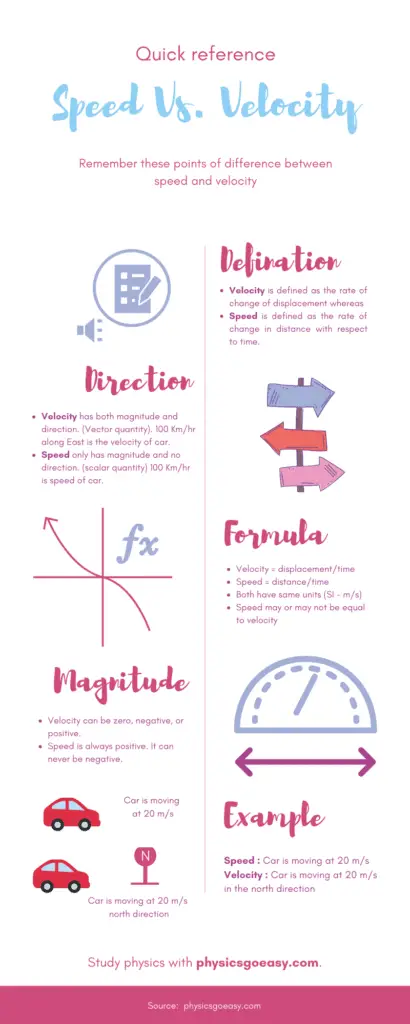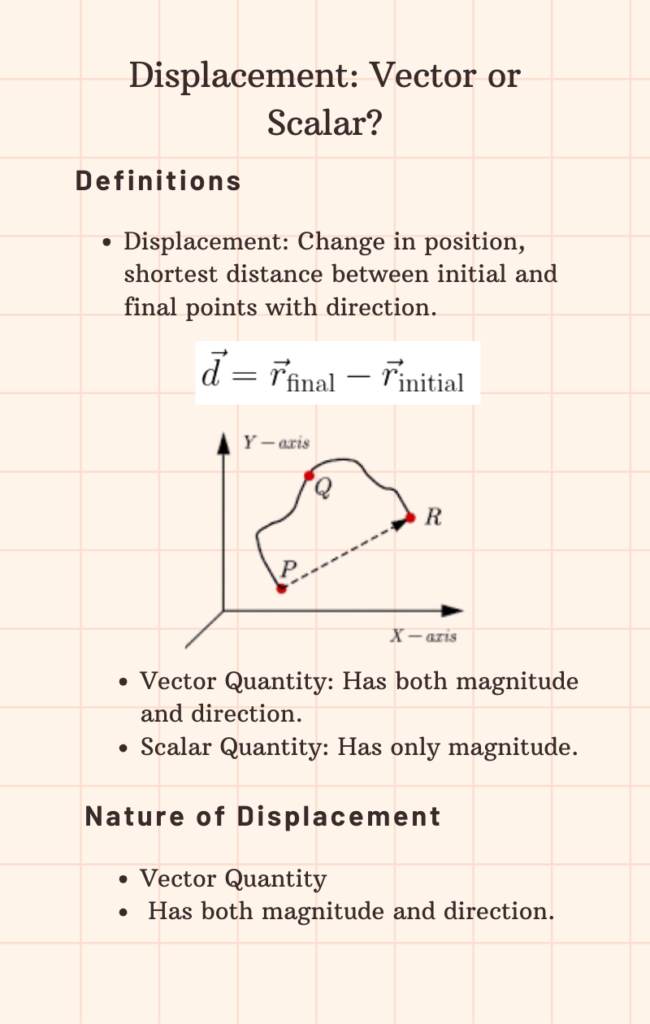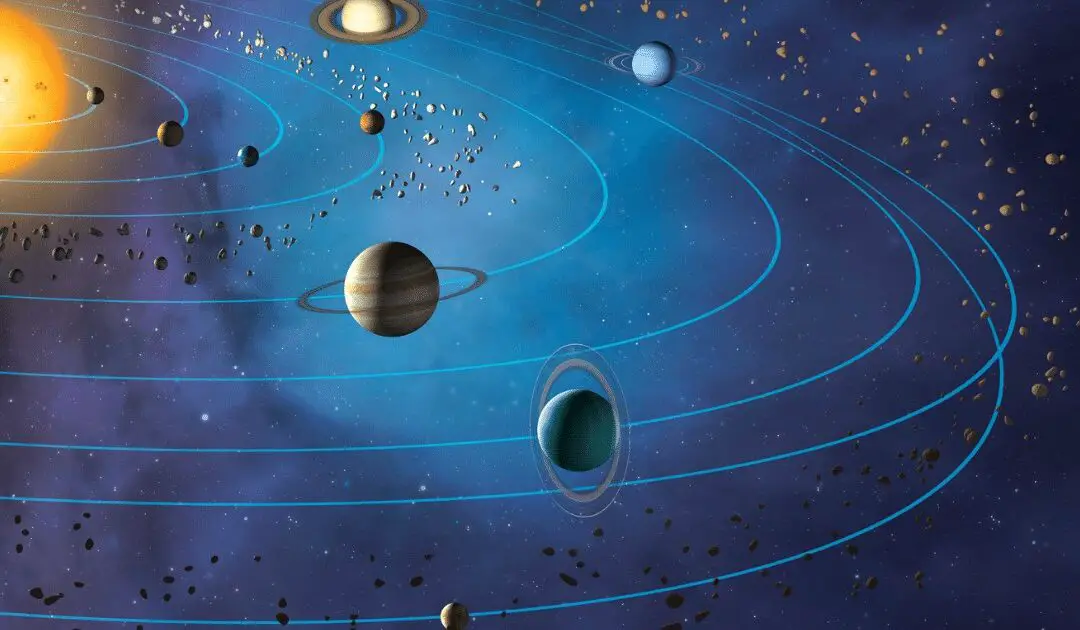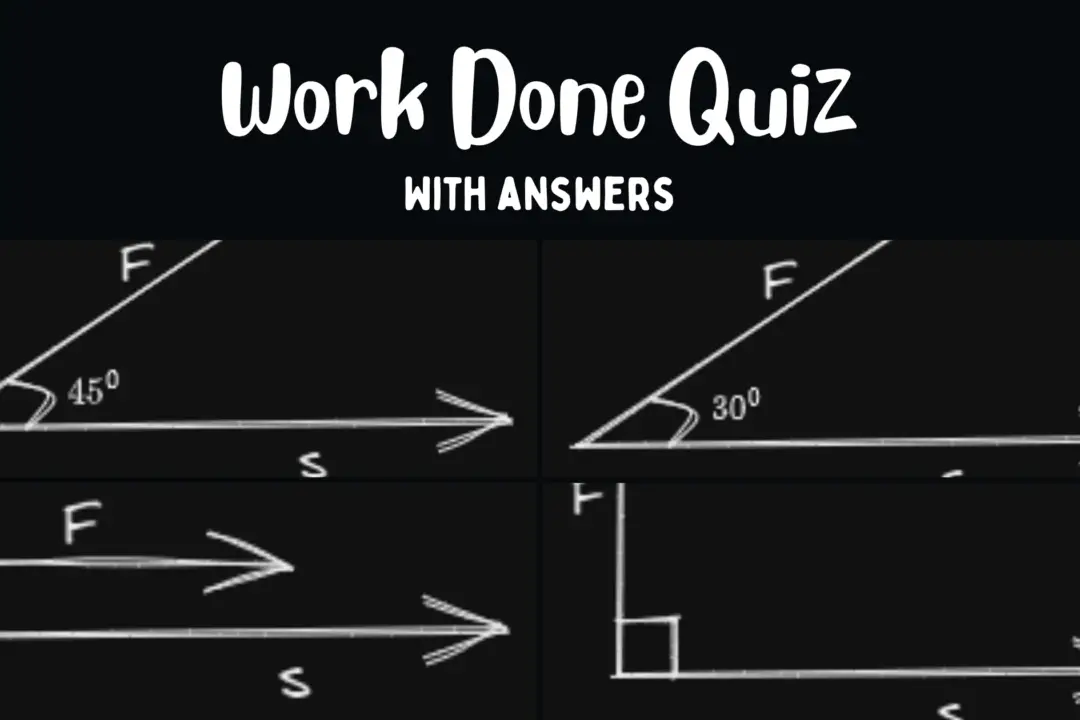
The current article is dedicated to finding the difference between speed and velocity. Here we will look at the speed vs. velocity comparison in tabular form along with the differences between them.
Speed and velocity are some basic concepts of physics. These concepts are introduced under kinematics. These are the terms that people use almost interchangeably in their day-to-day life.
In physics, both the terms speed and velocity have differences between them which cannot be ignored.
Speed Vs. Velocity
- Velocity is defined as the rate of change of displacement whereas speed is defined as the rate of change in distance with respect to time.
- Velocity is a vector quantity, both magnitude and direction (same as that of displacement) are required to define it whereas speed is a scalar quantity. Only the magnitude is required to define the speed.
- SI unit of velocity and speed is m/s. Speed and velocity both have the same unit.
- Now sometimes students ask questions like
Is average speed = average velocity?
The answer is no, the average speed is not equal to the average velocity. This is because
Average Speed = Total distance/Total time
Average Velocity = Total displacement/Total time
Just like both displacement and distance are different, average speed and average velocity are also different for example- Motion around a circular track.
Speed Vs. Velocity tabular form
| S.No. | Speed | Velocity |
| 1 | Rate of change of distance | Rate of change of displacement |
| 2 | Scalar quantity | Vector quantity |
| 3 | Can never be negative or zero | Can be negative, zero or positive |
| 4 | Velocity without direction | Velocity is the speed with direction |
| 5 | It may or may not be equal to the velocity | A body may possess different velocities but the same speed |
| 6 | Never decreases with time. For a moving body, it is never zero | Velocity can decrease with time. For a moving body it can be zero. |
| 7 | SI unit is m/s | SI unit is m/s |
Speed Vs. Velocity Graphical form

Related Articles







